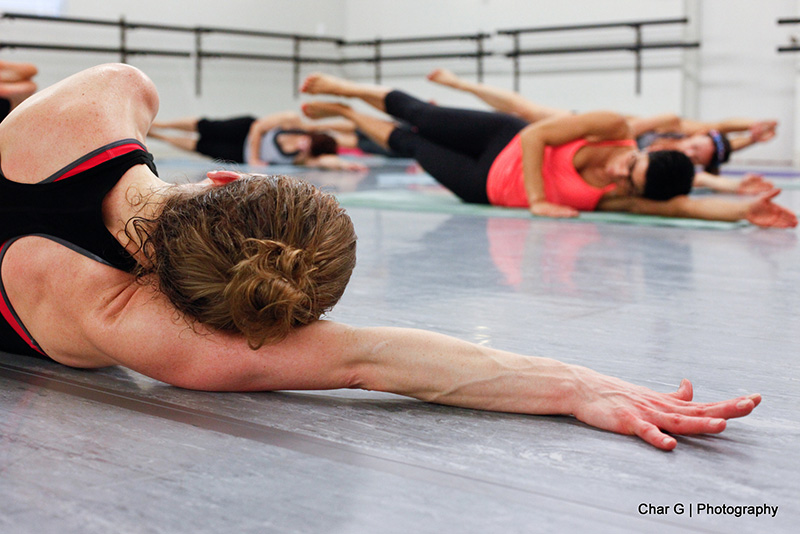
29 Mar Daily Practice of Pilates Mat
Joseph Pilates wrote in his book Return to Life through Contrology:
“If you will faithfully perform your Contrology exercises regularly only four times a week for just three months as outlined in Return to Life, you will find your body development approaching the ideal, accompanied by renewed mental vigor and spiritual enhancement. Contrology is designed to give you suppleness, natural grace, and skill that will be unmistakably reflected in the way you walk, in the way you play, and in the way you work.”
“Contrology is complete coordination of body, mind and spirit. Through Contrology you first purposefully acquire complete control of your own body and then through proper repetition of its exercises you gradually and progressively acquire that natural rhythm and coordination associated with all your subconscious activities.”
“Contrology develops the body uniformly, corrects wrong postures, restores physical vitality, invigorates the mind, and elevates the spirit.”
Joseph Pilates and his wife Clara taught and promoted his method, which he called “Contrology” for over 40 years.
Return to Life through Contrology is a must read for any Pilates enthusiast. I encourage you to read this book so you can dive deeper into the method and to understand Pilates’ intention to uniformly develop the body and to use it the way it was designed. To promote breathing, to stir up circulation, to stimulate the natural supply of blood. To free up tissue, so there is no resistance, no tension, no grip, nor hardness in the body and so that everything: the muscles, ligaments, tendons, organs, tissues, even bones, are supple; so the tissue can absorb the nutrients being carried to them by blood and oxygen. Then, we can move more effectively.
Pilates mat work exercises are intended to be done as a homework. This work complements the practice on the apparatus in the studio, under your teacher’s instruction. By doing the homework, you will be able to get more out of your weekly lessons with your teacher and you will be stronger and more focused.
I was inspired by Benjamin Degenhardt’s March MATness this year and decided to join along with the Pilates community.
Pilates recommends to do at least a few exercises for 10 minutes a day without fail, and then, increase to twenty or more minutes until you can complete the entire Mat, if time permits.
I can find 10 minutes a day to give to my body! I can invest in 10 minutes of Pilates a day to give myself a stronger body for life. I must take care of my own body so I have the energy to give to others: to my family, my students, my friends, and clients. Plus, I need the workout for my mind, too.
I love to feel fit and look healthy. My daily Pilates workout has allowed me to gain that confidence. I do not like to miss a day. I feel off without my daily workout.
I have created a good habit, yay!
So, start simple. The entire Daily Mat Workout is a lot to begin with so, I recommend setting up a timer for 10 minutes during the first few days. Assign yourself a small amount of exercises that you can finish in that short amount of time. Progress your practice day by day, gradually. Over time, you will find that you will add a few more exercises, and before long you will start feeling different.
I love Pilates. I’ve maintained my personal practice for over 17 years now. I love the structure. The prescribed order of Pilates exercises is something I have always liked. Without this structure, I would skip an exercise or two. Especially the ones I do not like (and need the most). We need them all.
“If you will faithfully follow the instructions, beginning with the introductory lesson, you will without doubt acquire correct physical fitness with proper mental control. These exercises will actually become a part of your very self securely stored away forever in your subconscious mind.” Joseph Pilates
The Order of the Pilates Mat Exercises and recommended sets from Return to Life through Contrology
The Hundred 1 set
The Roll Up 3x
The Roll-Over 5x each way
The One Leg Circle 5x each leg
The Rolling Back 6x
The Single Leg Stretch 5 sets (up to 12x each leg)
The Double Leg Stretch 6x (up to 12x)
The Spine Stretch 3x
The Rocker with Open Legs 6x
The Cork-Screw 3 sets
The Saw 3 sets
The Swan Dive 6x
The One Leg Kick 6 sets
The Double Leg Kick 5x
The Neck Pull 3x
The Scissors 6 sets
The Bicycle 5 sets
The Shoulder Bridge 3x each leg
The Spine Twist 3 sets
The Jack-Knife 3x
The Side Kick 3x each leg
The Teaser 3x
The Hip Twist 3 sets
Swimming count to 10
The Leg Pull Front 3 sets
The Leg Pull 3 sets
The Side Kick Kneeling 4x each leg
The Side Bend 3x each side
The Boomerang 6x
The Seal 6
The Crab 6
The Rocking 5
The Control Balance 6x
The Push Up 3x
In Pilates, we have Six Principles.
Joseph Pilates did not create these principles. They were created by instructors after his death to describe this method of exercise. Because of this, you might find slightly varied names and orders of the Pilates principles.
These six principles are considered the foundation of the Pilates approach to exercise.
Centering, Concentration, Control, Efficiency, Precision, Breath
Centering As in bringing the focus to the center of the body, the powerhouse, the area between the lower ribs and pubic bone, (area on the front of the spine, hips, lower back, buttocks). Energy exerted from your center initiates the Pilates exercises and then flow outward to coordinate the movement and extremities. Think about your center and use it as you go around your daily tasks.
Concentration As in bringing full attention to correct movement each time you exercise to obtain maximum value from each movement. The use of correct muscles will reserve your energy. Consistently concentrate on developing small muscles which help to strengthen the big ones. I love to feel my muscles activating (not hurting from overuse and build up of lactic acid) and awakening the muscle cells which might have been dormant for a while. When all muscles in the body are properly developed, you will perform the movements efficiently with minimum effort. (Another note for myself.)
Control One of the results of Pilates is gaining control over your body. Every movement is done with a complete, conscious and deliberate control. No sloppy movements, that is when injuries happen. Each Pilates movement serves a function.
“Ideally, our muscles should obey our will. Reasonably, our will should not be dominated by the reflex actions or our muscles.” Joseph Pilates
Efficiency (some schools use terms such as “Flow” or “Efficiency of Movement”)
Each movement is planned in Pilates. Each exercise prepares you for the next. There should be no unnecessary movements, no readjusting during the exercise. There are flowing transitions between exercises. (This is a note for myself.)
Efficiency is practiced and perfected over time. It is a process to learn which muscles to engage first for the most efficient use of energy.
Precision In Pilates, awareness is sustained throughout each movement. For me, the perfect example of this principle is good posture always, when lying, sitting, kneeling, standing, walking, correct balance of body weight, not locking joints, not pushing hips out, sticking ribs out, slouching and rounding back and causing compression of lungs and organs. Placing and aligning body parts correctly will result in proper function of your body. Eventually, this precision will become natural to you.
Breath Joseph Pilates emphasized using a very complete exhalation and inhalation of air to stimulates the muscles into greater activity and charging the body with fresh oxygen. Correct breathing reduces the strain of your heart, purifies the blood and develops the lungs. Proper breathing will help you to control and coordinate your movements in Pilates exercises and in daily life.
“Squeeze every atom of air from your lungs until they are almost as free of air as is a vacuum.” Josef Pilates
Pilates works all the muscles simultaneously. We continually switch movements, but all the muscles in the body are being used all the time and there is no overloading one area only. We stretch muscles as we strengthen them throughout the Pilates workout. There is a prescribed number of repetitions, because if you are performing the exercises with precision and efficiency, anything extra is unnecessary. Over-developing the superficial muscles at the expense of omitting the deepest muscles in the body might result in a loss of gracefulness and suppleness.
“You can say what Pilates is in 3 words: stretch with strength and control. And the control part is the most important because that makes you use your mind.” Romana Kryzanowska, protégé of Joseph Pilates.
Be patient with yourself, take time to understand each exercise, commit 5, 10, or 30 minutes from your day to Pilates mat work. Add a proper diet, sufficient sleep, some sunshine and fresh air, and in time you will see the results you are looking for.


No Comments